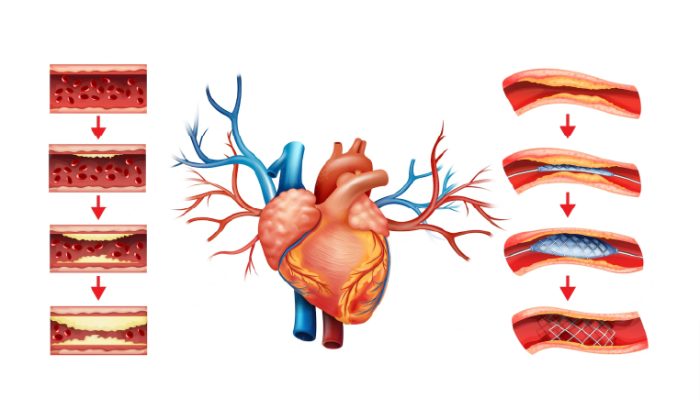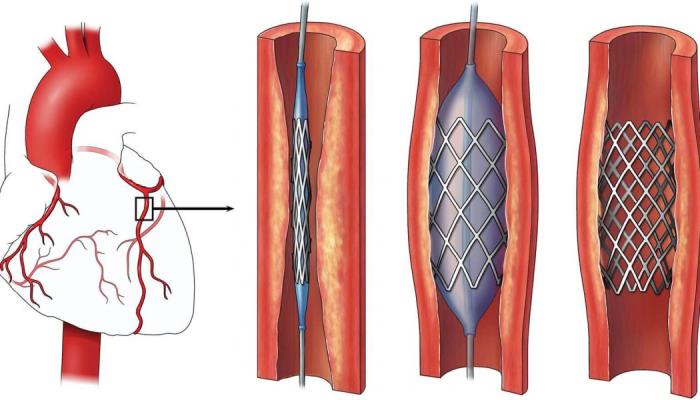Coronary angioplasty is a minimally invasive medical procedure used to open narrowed or blocked coronary arteries, improving blood flow to the heart. The procedure involves the insertion of a thin tube, called a catheter, which has a small balloon at its tip. Once positioned at the site of the blockage, the balloon is inflated to widen the artery, allowing blood to flow more freely. Coronary angioplasty is commonly performed to relieve symptoms of coronary artery disease, such as chest pain and shortness of breath, and can significantly enhance a patient's quality of life.
Historical Overview of Angioplasty Techniques
The history of angioplasty dates back to the late 1970s when Dr. Andreas Gruentzig performed the first successful balloon angioplasty. Initially, the procedure faced challenges, including high rates of restenosis, where the artery narrowed again after treatment. Over the years, various techniques have evolved, including the introduction of stents in the late 1980s, which helped keep the arteries open. As technology advanced, new methodologies such as rotational atherectomy and cutting balloon angioplasty emerged, further improving the success rates and safety of the procedure.
Recent Advances in Angioplasty Technology
Recent advancements in angioplasty technology have significantly enhanced the efficacy and safety of the procedure. Innovations include improved catheter designs that allow for greater maneuverability and precision during the procedure. Additionally, the development of bioresorbable stents, which gradually dissolve after serving their purpose, has emerged as a promising alternative to traditional metal stents. These advancements aim to reduce complications such as restenosis and thrombosis, offering patients better long-term outcomes.

The Role of Drug-Eluting Stents in Coronary Angioplasty
Drug-eluting stents (DES) have transformed the landscape of coronary angioplasty by significantly reducing the rate of restenosis. These stents are coated with medication that is slowly released to inhibit cell proliferation at the site of the stent, preventing the artery from narrowing again. Studies have shown that patients receiving DES have lower rates of recurrent symptoms compared to those with bare-metal stents. This advancement has made angioplasty a more effective treatment option for patients with complex coronary artery disease.
Comparing Balloon Angioplasty vs. Stenting: Current Insights
Balloon angioplasty and stenting are often used together, but they serve distinct purposes. While balloon angioplasty effectively opens narrowed arteries, stenting is employed to keep the artery open post-procedure. Research suggests that while balloon angioplasty alone may suffice for certain cases, combining it with stenting typically results in better long-term outcomes, particularly in patients with high-risk features such as complex lesions or diabetes. The choice between the two methods depends on the individual patient's condition and the angiographer's assessment during the procedure.
Innovations in Imaging Techniques for Angioplasty
Innovations in imaging techniques have greatly improved the precision and safety of coronary angioplasty. Advanced imaging modalities such as intravascular ultrasound (IVUS) and optical coherence tomography (OCT) allow for detailed visualization of the artery’s structure and the extent of plaque buildup. These techniques enable cardiologists to make informed decisions during angioplasty, ensuring optimal stent placement and reducing the risk of complications. Furthermore, enhanced imaging technologies contribute to personalized treatment plans, resulting in better patient outcomes in the long run.
Minimally Invasive Approaches: The Future of Angioplasty
Minimally invasive techniques in angioplasty have transformed how cardiovascular interventions are performed. These approaches often involve smaller incisions, leading to reduced recovery times and less postoperative pain. Advancements in technology have made procedures safer and more effective, allowing for quicker patient recovery and improved outcomes.

Exploring the Use of Biodegradable Stents
Biodegradable stents are a promising development in angioplasty. Unlike traditional stents, which remain in the body permanently, biodegradable stents dissolve over time, reducing the risk of long-term complications and allowing normal artery function to resume. Research is ongoing to determine the optimal use of these stents in various clinical scenarios.
Research on Angioplasty Outcomes in High-Risk Patients
Recent studies have focused on angioplasty outcomes for high-risk patients, such as those with diabetes or complex coronary artery disease. Understanding the risks and benefits specific to these populations helps tailor treatment plans and improve overall patient outcomes.
The Impact of Coronary Angioplasty on Quality of Life
Coronary angioplasty has been shown to significantly improve the quality of life for many patients. By alleviating symptoms such as chest pain and improving blood flow, patients often experience enhanced physical activity and emotional well-being post-procedure.

The Relationship Between Angioplasty and Heart Attack Prevention
Angioplasty plays a crucial role in preventing heart attacks by restoring blood flow to blocked arteries. Early intervention can reduce the risk of severe cardiovascular events, emphasizing the importance of timely treatment in patients with significant coronary artery disease.
New Studies on Dual Antiplatelet Therapy After Angioplasty
Research into dual antiplatelet therapy (DAPT) following angioplasty has expanded, focusing on optimizing treatment duration to prevent thrombotic events while minimizing bleeding risks. Understanding the right balance is essential for improving patient outcomes and reducing complications.
Understanding Long-Term Effects of Angioplasty
The long-term effects of angioplasty are an area of active research. Studies aim to assess not only the immediate benefits but also the durability of results, potential need for reintervention, and overall cardiovascular health following the procedure.
The Role of Personalized Medicine in Angioplasty Treatment
Personalized medicine is increasingly influencing angioplasty treatment plans. By considering individual patient characteristics, including genetic profiles and specific risk factors, healthcare providers can tailor interventions to enhance efficacy and minimize adverse outcomes.
Investigating Complications and Risk Factors in Angioplasty
Understanding potential complications and risk factors associated with angioplasty is crucial for improving patient safety. Research aims to identify specific patient demographics that may face heightened risks, allowing for better preoperative assessments and management strategies.
Patient Perspectives: Experiences and Expectations from Angioplasty
Gathering patient perspectives on angioplasty can provide valuable insights into their experiences and expectations. Understanding patient concerns and satisfaction levels can guide improvements in care and enhance communication between healthcare providers and patients.
Future Directions: What’s Next for Coronary Angioplasty Research?
Future research in coronary angioplasty is expected to explore innovative techniques, materials, and technologies that can improve patient outcomes. Continuous advancements in the field aim to refine procedural approaches and enhance long-term results.
The Importance of Multidisciplinary Teams in Angioplasty Care
Multidisciplinary teams play a vital role in the care of patients undergoing angioplasty. Collaboration among cardiologists, surgeons, nurses, and rehabilitation specialists ensures comprehensive care, addressing both the technical and supportive aspects of treatment.
Emerging Trends in Post-Angioplasty Rehabilitation
Post-angioplasty rehabilitation is evolving, focusing on tailored exercise programs and lifestyle modifications to support recovery and prevent future cardiovascular events. Emerging trends emphasize the importance of continuous support and education for patients during their rehabilitation journey.
Connection Between Cholesterol Levels and Heart Disease
Understand the critical link between cholesterol levels and heart disease. This section explains how high cholesterol contributes to the development of cardiovascular conditions and discusses strategies for managing cholesterol to promote heart health and reduce the risk of disease.
Impact of High Blood Pressure on Heart Health and Angioplasty
Learn about the effects of high blood pressure on heart health and its implications for angioplasty. This section covers how hypertension can exacerbate cardiovascular issues, the importance of blood pressure management, and how it relates to the success of angioplasty procedures.
Conclusion: Staying Informed About Innovations in Angioplasty
Staying informed about the latest innovations in angioplasty is crucial for both healthcare providers and patients. Understanding advancements in techniques, devices, and post-procedure care can lead to better outcomes and enhance the overall effectiveness of cardiovascular interventions.
Best Coronary Angioplasty in India
The Best Coronary Angioplasty in India is a minimally invasive procedure that helps restore blood flow to the heart by widening blocked arteries, improving cardiovascular health and reducing chest pain.
Best Coronary Angioplasty Hospitals in India
The best coronary angioplasty hospitals in india offer state-of-the-art facilities and highly skilled cardiology teams, ensuring comprehensive pre- and post-operative care for effective treatment outcomes.
Coronary Angioplasty Cost in India
The coronary angioplasty cost in india is affordable, with transparent pricing and flexible options, making high-quality cardiovascular care accessible for patients.
Best Coronary Angioplasty Surgeons in India
The Best Coronary Angioplasty Surgeons in India are experienced specialists in interventional cardiology, dedicated to providing personalized and effective treatment for each patient.
FAQ
What are the latest advancements in coronary angioplasty?
Recent advancements include minimally invasive techniques, the development of biodegradable stents, and improvements in dual antiplatelet therapy.
How do drug-eluting stents differ from traditional stents?
Drug-eluting stents are coated with medication that helps prevent the artery from becoming blocked again, while traditional stents do not have this medication.
What are the risks associated with coronary angioplasty?
Risks can include bleeding, infection, blood vessel damage, and the potential for re-narrowing of the artery.
How is research influencing the outcomes of angioplasty?
Ongoing research helps identify best practices, optimize patient selection, and improve procedural techniques, leading to better patient outcomes.
What future trends are anticipated in angioplasty procedures?
Future trends may include the use of advanced imaging techniques, personalized medicine approaches, and enhanced rehabilitation protocols to improve recovery and long-term results.